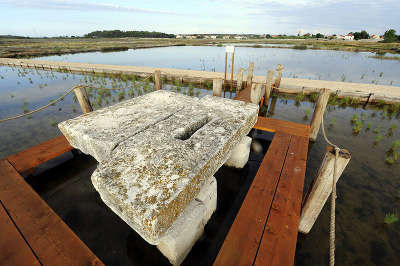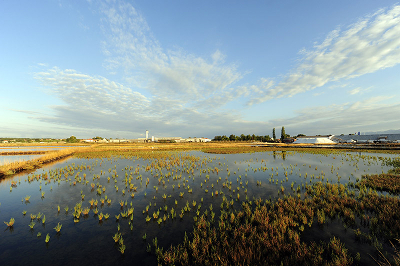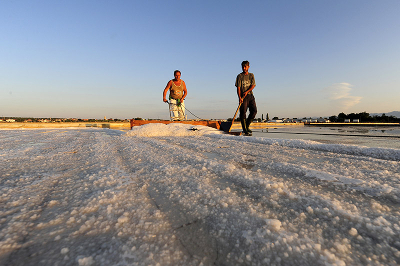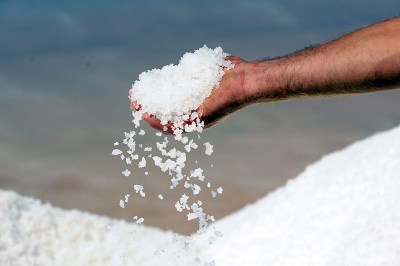
Solana Nin
Solana Nin

History
For centuries, Nin Saltworks gives life. It has nurtured many generations. It has given many plants and animals a home. Love for the salt has transferred from generation to generation. Even the Roman emperors at their feasts enjoyed the salt's abundance of flavors. A Roman gate, still located at the salt pans, testifies the age of our salt pan.
At those ancient times, salt was exchanged for gold, ounce for ounce, and it is well known that Roman soldiers were paid with our salt. The Roman term for this kind of payment was salarium – it is believed that the term „salary“ originates from that.


In 1500, Venetians bought salt pans on the Adriatic coast, including our Nin Saltworks. Since it was a rival to their salt pans, they shut it down for centuries. They could not shut down life. Nin Saltworks was still alive and a biodynamic ecosystem. Even today, it still lives and produces at the same way. Located at the shallow lagoon of the Nin bay, it covers an area of 55 hectares. In the wider area there is no industry or extensive agriculture, and the area of Nin Saltworks is located between five Croatian national parks (Plitvice, Paklenica, Northern Velebit and Krka), which further testifies the purity and an unspoiled natural environment.
How is the Nin salt produced?
Production at the Nin Saltworks in a natural and ecological way goes through five stages. The first four stages are the evaporation of sea water of the Adriatic sea thanks to the sunny and warm days, and the fifth stage is crystalization where the concentrated sea water (brine) transforms from liquid to solid state.


With the help of sunshine and windy days it takes 8 mm of water to evaporate 1 mm of salt. At the Nin Saltworks, the salt is collected on several occasions, and the first "harvest" is done when there is a 15-20 mm layer of sea salt. Prior to the "harvest", i.e. the collection of salt, the brine is discharged for the salt to grate, i.e. to be dry. Fresh salt is then manually collected on piles and transported to the warehouse. The average production of sea salt in the last 10 years at the Nin Saltworks is 3200t. High temperatures and winds are favorable to the production of sea salt, especially "dry" south breeze and light bora. Season "harvest" lasts on average 63 days during the spring, summer and early fall.
Nin
Nin, a small town in the county of Zadar, is situated in a unique lagoon on the Croatian coast of the Adriatic sea. There is an oasis of sandy beaches in the middle of the Nin bay, particularly pointing out one of the most beautiful beaches in the world, the Queen's beach. In the east there are fields of the Nin Saltworks, and in the west is the site of the mud that has been used for the treatment and rehabilitation for the last 40 years. The "Blue Flag" is a proof and a symbol of exceptionally clear waters which are a habitat of endemic species of plants and animals.















